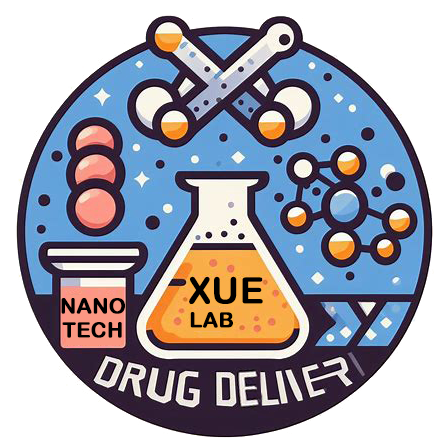Haijing's work titled <Drug-drug conjugates self-assembled nanomedicines triggered photo−/immuno- therapy for synergistic cancer treatments> is online at Journal of Controlled Release. Cheers
感谢加州大学戴维斯分校Yuanpei Li(李源培)教授的无私帮助和大力支持。
感谢主编和审稿人的认可,尤其是孙逊老师亲自帮忙修改论文标题,感谢!
Check it out on https://www.sciencedirect.com/science/article/pii/S0168365923006296
摘要:尽管免疫疗法在癌症治疗方面取得了进展,但因稀疏免疫细胞浸润(“冷”免疫微环境)和抑制性肿瘤免疫微环境(TIME),免疫治疗的临床反应率很低,且差异很大。开发一种整合多种免疫刺激和TIME调节功能,且简单而有效的方法,或可解决这一临床挑战。为此,我们将两个小分子,包括光敏剂(pyropheophorbide-a,PA)和Toll样受体7/8激动剂(resiquimod,R848)结合为双亲性前药(PA-R848)。该前药可自组装成酯酶响应性纳米颗粒(PARE NPs),具有100%的药物成分和协同光-/免疫治疗效果。在PARE NPs中,PA表现出高效的光疗作用,可直接消融原发性肿瘤,并引发免疫原细胞死亡(ICD)以促进免疫反应。R848有效地将M2型肿瘤相关巨噬细胞(TAM)极化为M1型TAM,从而在与光疗协同性逆转“冷”以及免疫性TIME。PARE NPs可以通过两种协同作用有效地抑制肿瘤发展,包括i)ICD和TAM极化之间的协同免疫治疗;ii)以及光疗和免疫治疗之间的协统性抗肿瘤效果。在头颈鳞状细胞癌小鼠模型上,PARE NPs与PD-1抗体相结合,可高效清除原发性肿瘤,并显著抑制远处肿瘤的进展。
Abstract: Although immunotherapies have made progress in cancer treatment, their clinical response rates vary widely and are typically low due to sparse immune cell infiltration (immune “cold”) and suppressive tumor immune microenvironment (TIME). A simple yet effective approach that integrates a variety of immune-stimulating and TIME-modulating functions could potentially address this clinical challenge. Herein, we conjugate two small molecules, including a photosensitizer (pyropheophorbide-a, PA) and a Toll-like receptor 7/8 agonist (resiquimod, R848), into prodrug (PA-R848) that self-assembles into PA-R848 esterase responsive nanoparticles (PARE NPs) with 100% drug composition and synergistic photo−/immune- therapeutic effects. In PARE NPs, PA exhibits strong phototherapeutic effects which ablate the primary tumor directly and elicits immunogenic cell death (ICD) to promote the immune response. R848 effectively polarizes the M2-type tumor-associated macrophage (TAM) to M1-type TAM, consequently reversing the “cold” and suppressive TIME when working together with phototherapy. The PARE NPs can efficiently pare down the tumor development by two synergisms, including i) synergistic immunotherapy between ICD and TAM polarization; ii) and the antitumor effects between phototherapy and immunotherapy. On a head-neck squamous cell carcinoma mouse model, PARE NPs combined with PD-1 antibody eliminate primary tumors, and significantly inhibit the progress of distant tumors thanks to the robust antitumor immunity enhanced by the PARE NPs.

